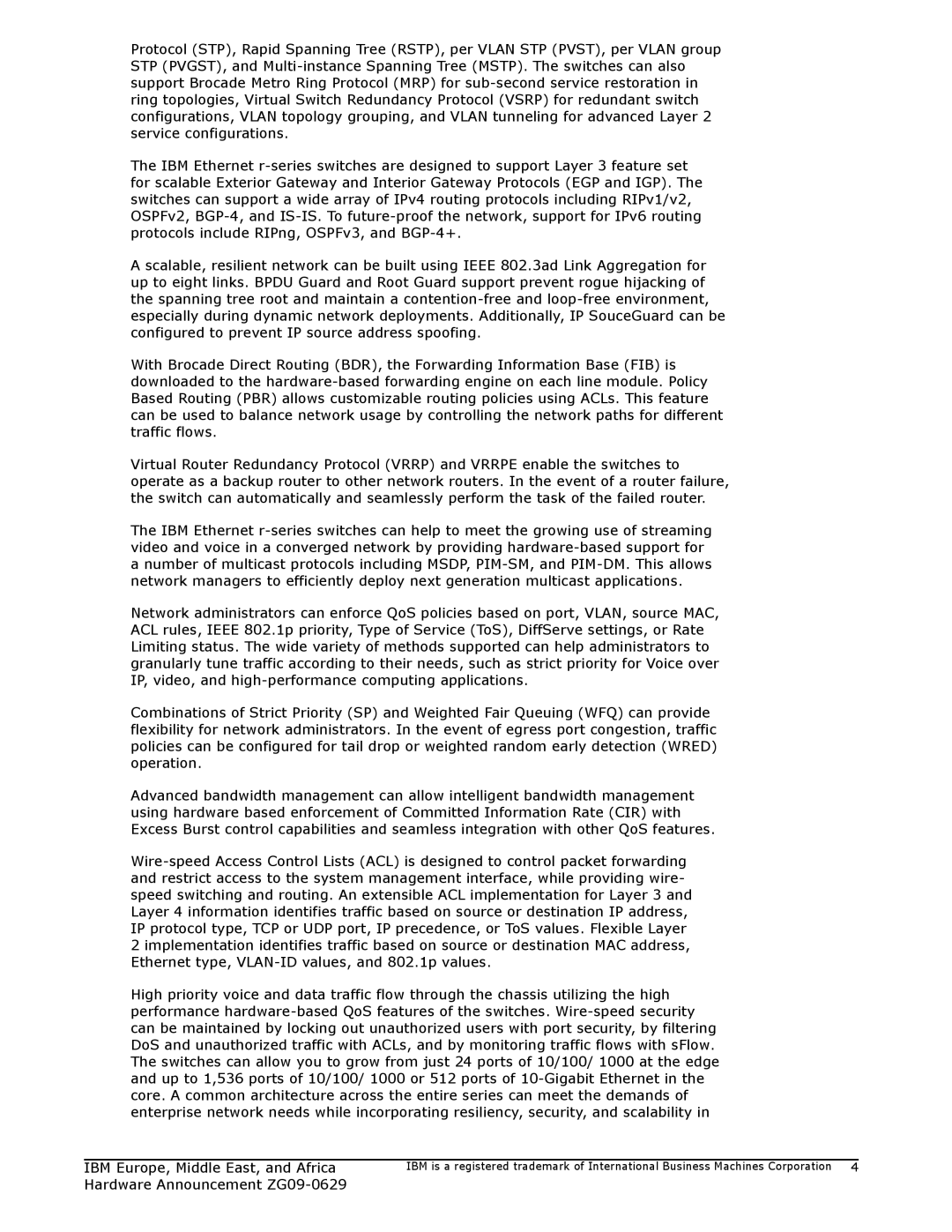ZG09-0629 specifications
IBM ZG09-0629 is an advanced enterprise server model that represents a significant leap in IBM's Z series mainframe technology. Designed for high-performance computing and transaction processing, the ZG09-0629 is built to address the demands of modern businesses that require robust, reliable, and secure computing solutions.One of the standout features of the ZG09-0629 is its exceptional processing power. It incorporates cutting-edge processors that leverage IBM’s latest z15 architecture, enabling superior speed and efficiency in data processing. With multiple cores and threads, this model can handle vast numbers of simultaneous transactions, making it ideal for high-traffic environments such as banking, telecommunications, and e-commerce.
The ZG09-0629 also boasts enhanced memory capabilities. It supports large memory configurations, allowing for superior multitasking without compromising performance. This characteristic is essential for businesses that operate extensive databases and applications, ensuring that they can manage workloads efficiently.
Security is a paramount consideration in the design of the ZG09-0629. It features IBM’s pervasive encryption technology, which secures data both at rest and in transit. This model allows organizations to encrypt sensitive data with minimal performance impact, reinforcing compliance with regulatory standards and protecting against data breaches.
Virtualization capabilities are another prominent characteristic of the ZG09-0629. It supports thousands of virtual machines, enabling businesses to consolidate IT resources and optimize costs. This flexibility allows organizations to scale their operations seamlessly, adjusting resources based on demand without the need for additional physical infrastructure.
In terms of connectivity, the ZG09-0629 supports a wide range of integration protocols, including modern cloud services. This integration facilitates hybrid cloud architectures, allowing businesses to manage data across on-premises environments and cloud platforms effectively.
Furthermore, the model comes equipped with advanced analytics tools that help organizations derive actionable insights from their data. By leveraging AI and machine learning, the ZG09-0629 empowers businesses to make informed decisions rapidly.
In conclusion, the IBM ZG09-0629 represents a formidable solution for enterprises looking to enhance their IT capabilities. With its powerful processing, extensive memory, robust security features, virtualization support, and advanced analytics, it stands as a vital asset for organizations aiming to thrive in an increasingly digital world.
